For many people, the highlights of Iran (apart from the people) are the mosques and medrassahs and the blue tiles that adorn such buildings. However, much of this architecture was built after Timur (Tamerlane) cut swathes through the region, and given that he had his capital in Samarkand (Uzbekistan) the most impressive examples are actually found there. What I’m trying to say is that if you have traveled through Uzbekistan, many of the key sights in Iran are a bit “I’ve seen it all before”. Sorry, I know that sounds harsh and is a gross generalization – but that was my feeling after wandering around Esfahan for a few days.
So I was really excited to be travelling several hundred kilometres further south to Persepolis – the capital of the Achaemenid (first Persian) Empire (550-330BC – i.e. well before Timur) – for something completely different.
We arrived at about 2pm, I slathered on sunscreen, and headed out into the 40-degree heat. I then proceeded to walk around outside for the next 3 hours, turning into a bright red tomato in the process (not sunburn, just hot – remember I’m wearing long pants, long sleeves and a headscarf because I’m a woman in Iran!).
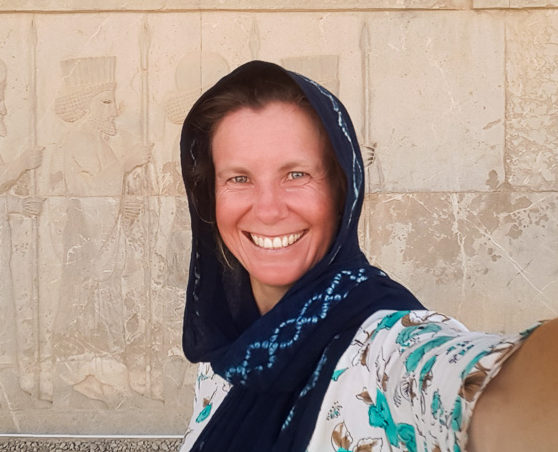
But it was totally worth it! This enormous site is amazing, and more reminiscent of what you would expect to see in Greece or Egypt than anything we’ve seen so far across the Silk Road.

The complex sits on a raised platform approached by two grand stairways, and consists of several palaces (built by Darius I, Xerxes I and Artaxerxes III), the Gate of all Nations, the Treasury, and various other buildings, all created out of grey limestone.

A pair of lamassu, bulls with the heads of bearded men, greet you at the Gate of All Nations at the western threshold to reflect the power of the empire.

There are columns aplenty, including the decorated stubs of the 72 columns that made up the grand hall of Apadana, the greatest palace at Persepolis. The 13 columns that remain standing show them to have measured 19m high, with each topped by an animal sculpture.
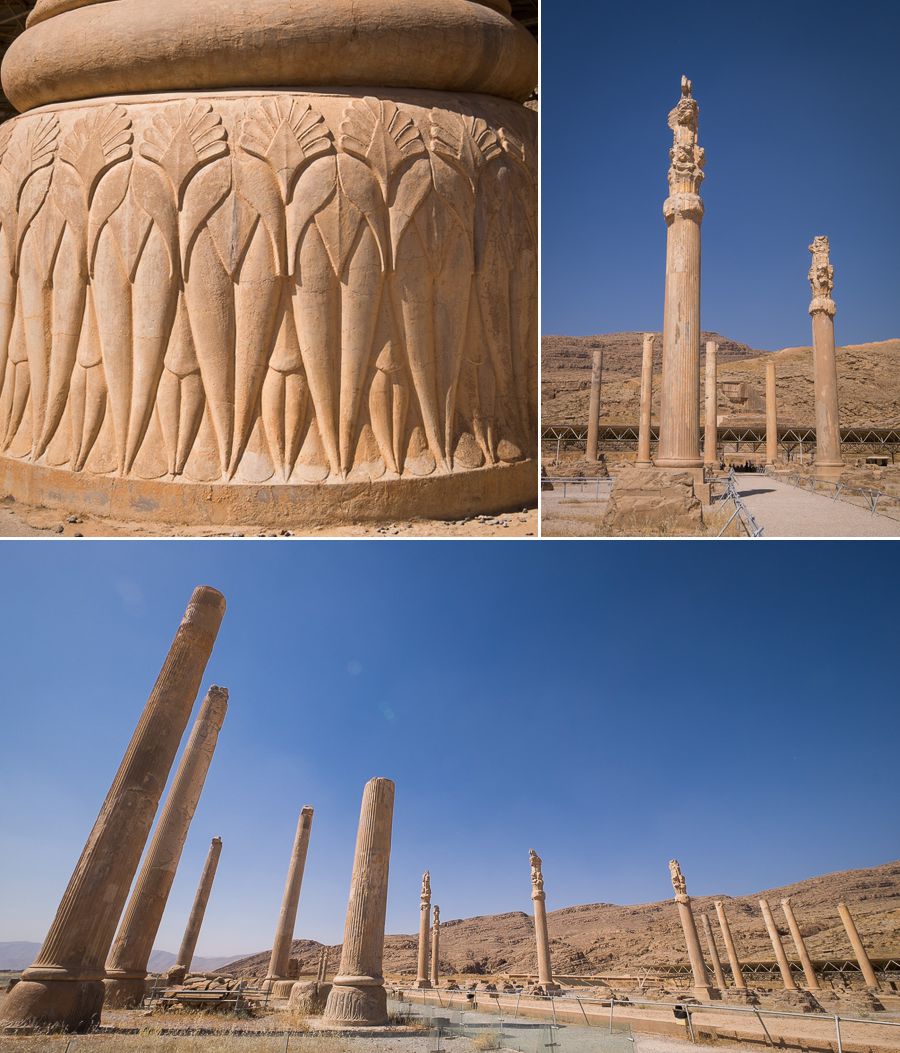
But the highlights of the site really are the bas relief carvings that are found absolutely everywhere.
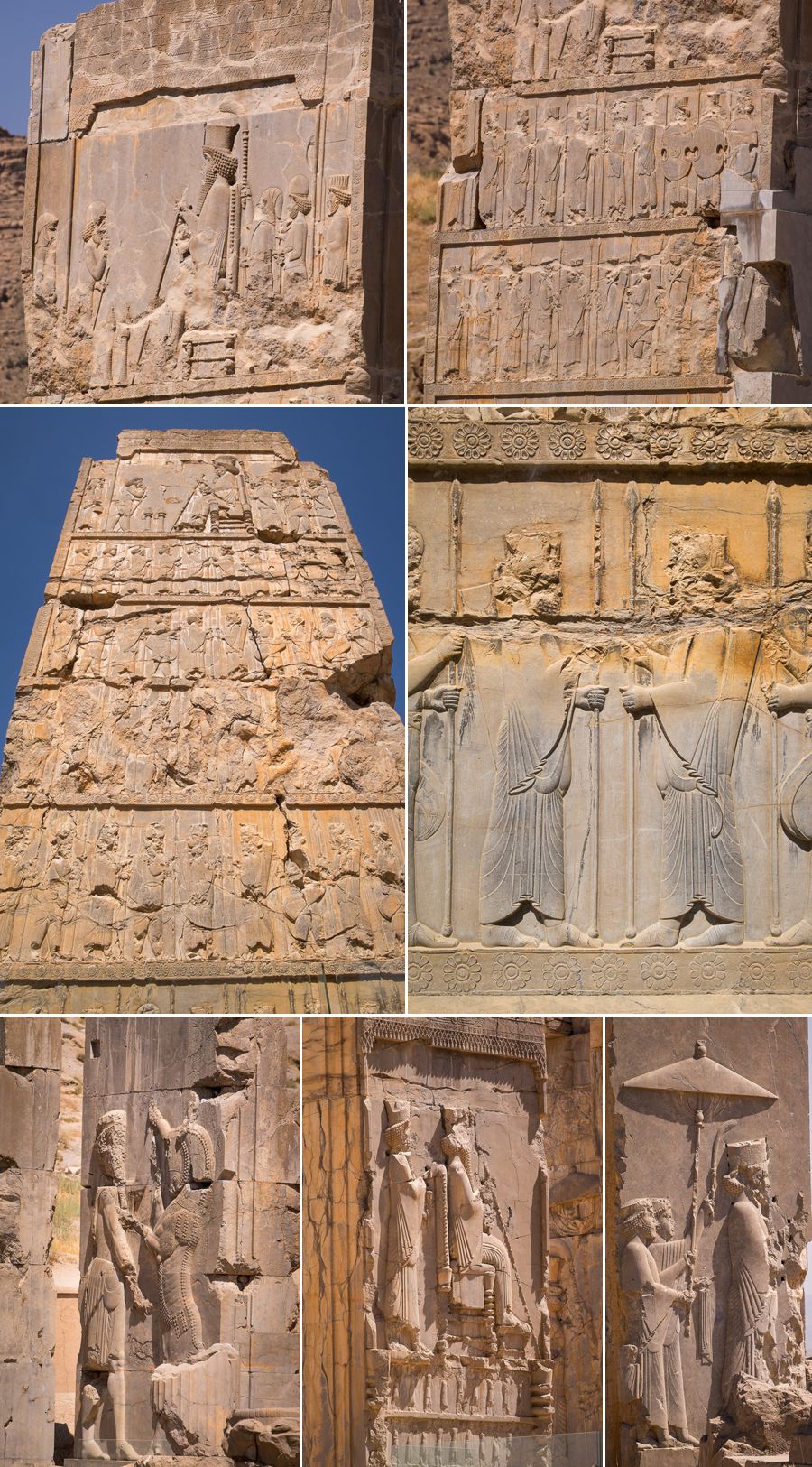
This image of a lion mauling a deer is prevalent across the site

As is the Zoroastrian symbol of Fravahar.
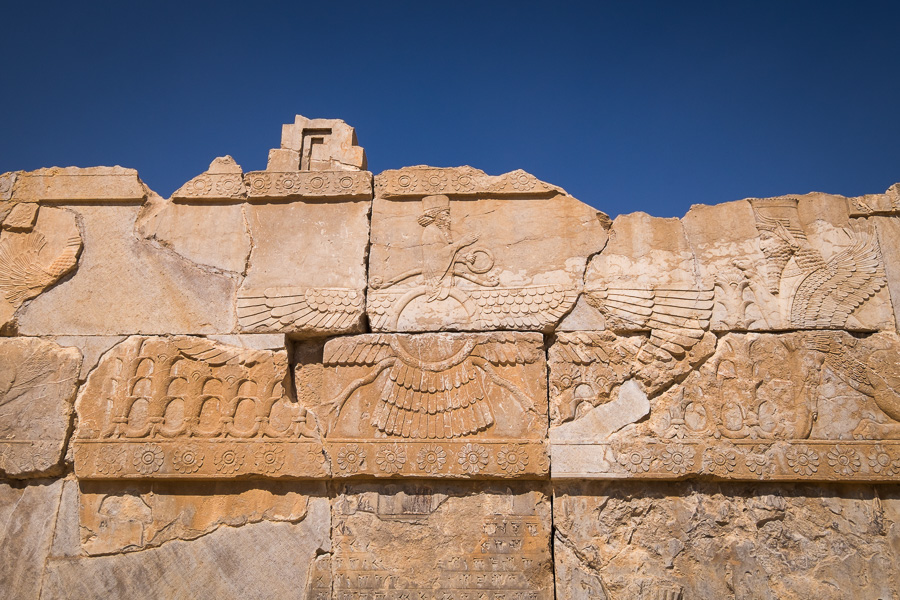
But the majority of the carvings tell the story of Persepolis, depicting life and the goings-on there.
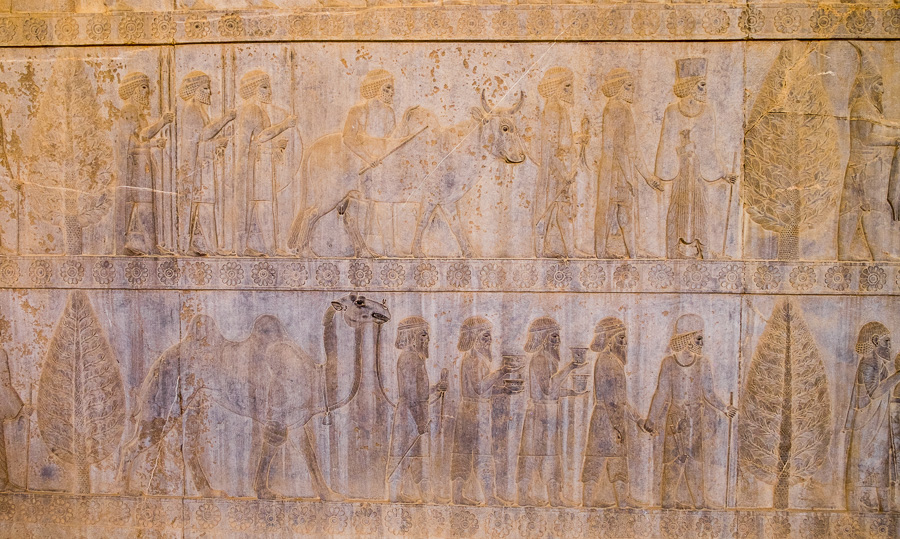
The most well-preserved of these are found on the eastern Apadana stairway (which was only unearthed in the 1930s). I spent ages just sitting exploring the different images of a far distant past.
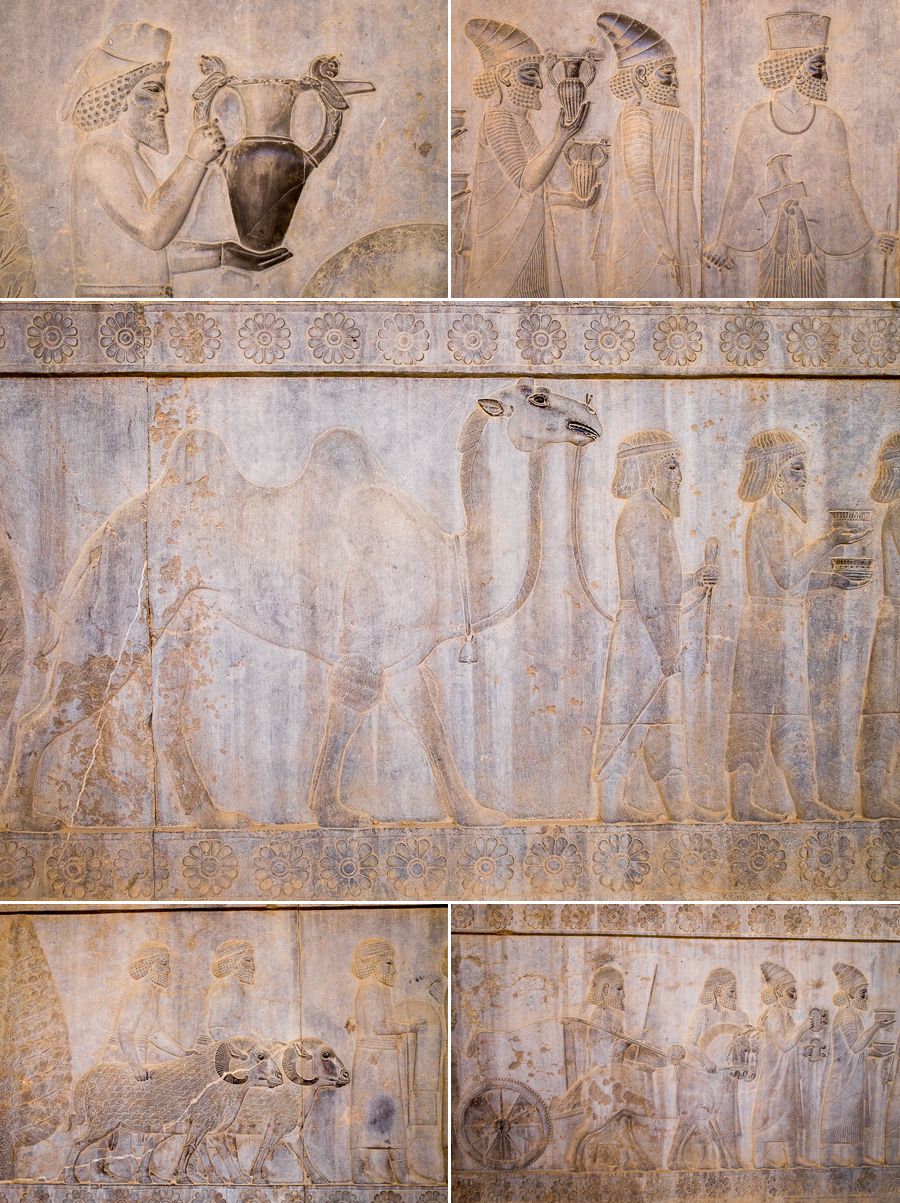
I also hiked up to the three tombs (one unfinished) that sit above the complex and are thought to be the burial sites of Artaxerxes II and Artaxerxes III. Because, you know, you can never get too much sun and heatstroke!
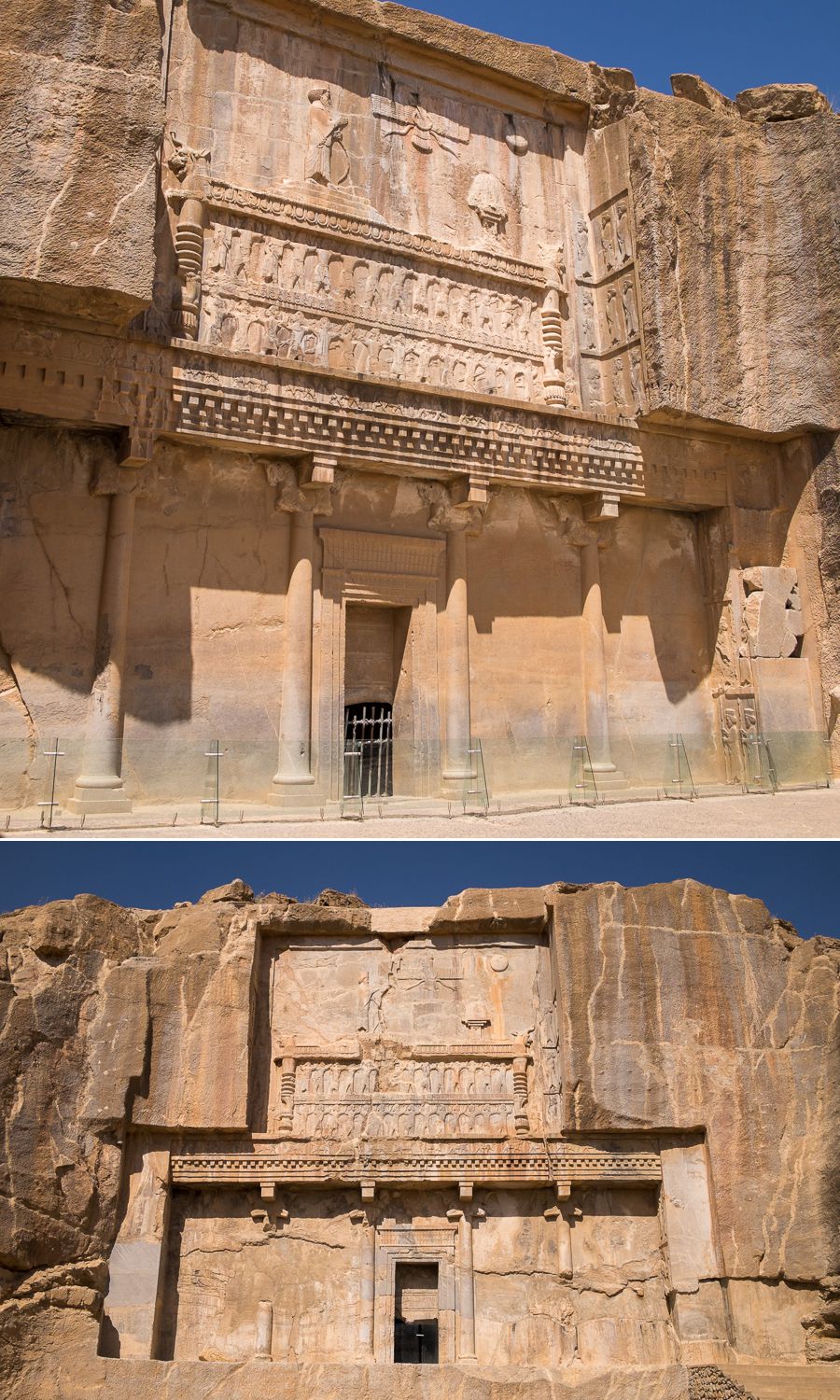
I’m not going to go into the history of Persepolis here, as you can read plenty about it online. Just one small snippet – it was Alexander the Great who destroyed it in 330BC. But needless to say, it is a fascinating site and definitely worth the visit. You need at least 4 hours in my opinion, though longer is better (I didn’t even make it inside the museum!)